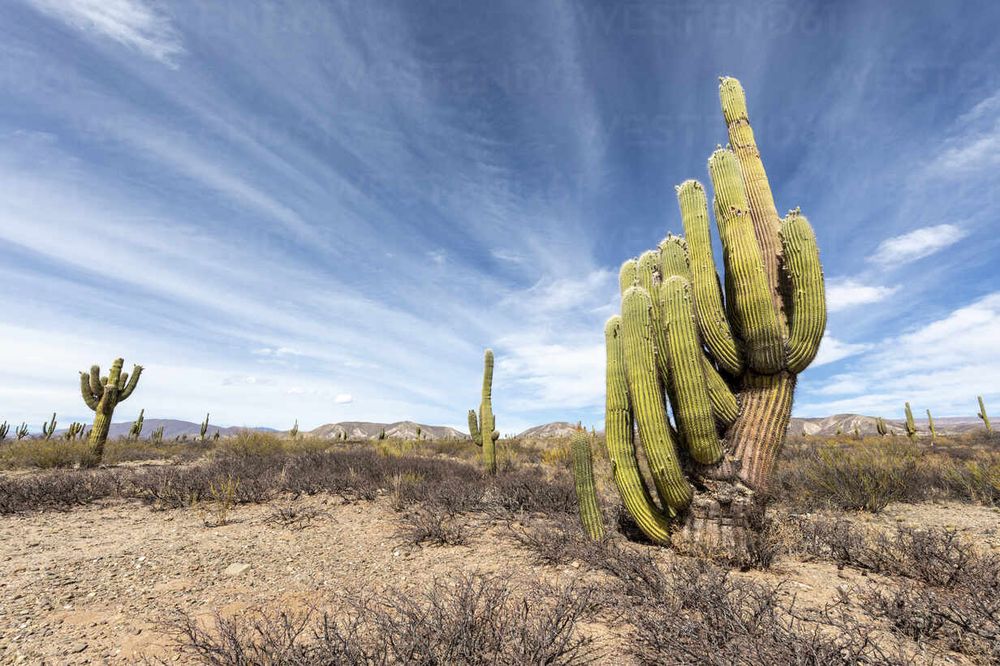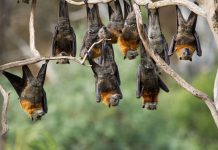Los Cardones National Park is located in the central western part of the Salta Province, between the designated Calchaquíes Valleys, occupying a surface of more than 130,000 acres. The terrain consists of the typical sierras and dry gorges between 2700 and 5000 m (8856 and 16,400 ft) above sea level, where bushes and “cardones” or thistles (Trichocereus pasacana) make up the abundant vegetation that grows there.
The “cardón” or thistle, column-like cactus plant that exists in areas 3400 m (11,152 ft) in altitude, is the symbolic species of this National Park. Another notable type of vegetation among this landscape is the “churqui”, member of the leguminous tree family that displays its little forests within this park.
The altitude gradient of this region makes for a largely diverse environment that allows an appreciable variety of animals to exist in such a desert-like area. There have been more than 100 species of birds detected, a few that deserve recognition are the inambu serrano, quiula puneña, and the aguilucho puneño (eaglet of the puna region), among others. These birds are typical of Argentina. Other kinds of animals include the vicuña and the northern guemul, whose populations have declined dangerously in Argentina.
There are three kinds of environment: the sierran, marked by the mountains and isolated hills; the piedmont and lowlands, with slightly inclined surfaces, preserved by the activity from the streams and with surfaces exposed to erosion and contribution from fluvial sediment. And lastly, that of the basin or quarry, which corresponds to the low areas where there is continuous contribution of fine material transported by water.
The sierras are distinguished by their variety of colors, from reds to diverse shades of green and black, and can be seen in the eastern foothills of the Cerro Tin-Tin. On this particular hill are also widespread deposits of lime that contain countless well-preserved fossil remains that belong to gastropods, seaweed, fish, and dinosaurs.
The greater part of this area has a climate distinctly arid: dry and warm with average temperatures of 11ºC (52ºF) in the winter (with lows slightly below 0ºC or 32ºF) and 18ºC (64ºF) in the summer (with highs of around 30ºC or 86ºF). Precipitation is scarce, averaging no more than 200 mm (7.8 in) yearly, and this only during the summer time (November to March) when more than 90% of the year’s precipitation falls. Of course, it doesn’t rain the same amount in all the areas nor the same every year. An exceptional case is the snow that sometimes falls in the lower areas (8856 ft above sea level), where the annual temperature varies between 48º and 50ºF.


























